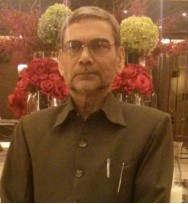Art of the Story in the Classical and Modern Arabic Literature
Abstract
The story appeared in the prose later than the poetic epic and drama in the world literature. The story was the last literary genre that had emerged in the world literatures. It was free from the restrictions of the literary criticism and least committed to the rules of criticism. This freedom made it to take urgent steps towards the progress in the modern age, overtaking the other genres in the performance of the humanitarian message of the literature. Therefore, it obtained a superiority and a social and artistic status among the other literary genres in the grand literatures.
There were some narrative elements in the ancient epic that helped the emergence of narrative prose in Greek literature in the second century AD for the first time. The story had the nature of epic at that time, which was included the metaphysical adventures, magic and supernatural things. The events of story in that era were running around the separation of couple, horrific dangers, frightening scenes and obstacles that were counted as a reason of the separation between them, but they crossed all those obstacles by some unusual ways. Then there was an happy ending by the meeting held between them.
In this article we study six stories entitled: “One Thousand and One Night”, “Disciples and Cyclones”, “Message of Forgiveness”, “Message of Ḥayyi b. Yaqdhān” and Story of Salāmān and Absāl. There are some religious stories of prophets mentioned in Quran, but the art of technical story was not intended by them.
Downloads
References
[2] Badawī. ʾAmīn ʿAbd al-Majīd. Story in Persian literature. Cairo: House of the Knowledge. Pp. 88-89
[3] Ibn al-Nadīm. The index. P. 304
[4] Hilᾱl. Muḥammad Ghunaymī. Comparative Literature. Pp. 222-223
[5] Al-Thaʻlabī. Unique of the time. Cairo: Part: 4. P. 257. Ḥijᾱzī Press. See: Nadᾱ. Ṭᾱhᾱ. Comparative Literature. P. 174
[6] Brockelmann. History of Arabic Literature. Cairo: House of the Knowledge. P. 29. P. 112
[7] A number of authors have talked about this poem, like: Ibn al-Nadim in (The index), Yᾱqūt Al-Ḥimawī in (Dictionary of the countries), Al-Qazwīnī in (The effects of the countries) and the others.
[8] Hilᾱl. Muḥammad Ghunaymī. Comparative Literature. P. 224-227
[9] Al-Ḥimawī. Yᾱqūt.Dictionary of the writers. Part 2. P.161
[10] Ibid. Part 1. P. 221 Cairo, 1948
[11] Ibn Khallikᾱn. Wafayᾱt al-Aʻyᾱn, Bulaq edition. P. 598
[12] Nadᾱ. Ṭᾱhᾱ. Comparative Literature. P. 193
[13] Ibid. P. 194
[14] Khafagy. Muḥammad ʿAbd al-Munʻim. Studies in Comparative Literature. P. 31
[15] Hilᾱl. Muḥammad Ghunaymī. Comparative Literature. P. 23
[16] Ibid. Pp. 234-235
[17] Ibid. P. 240
[18] Ibid. P. 241
[19] Ibid. Pp. 232-233
[20] Ismaʻīl ʾAdham. (1938). Tawfīq al-Hakīm. Cairo: P. 18
[21] Ḍaif. Shawqī. Art and its doctrines in Arabic Prose. Cairo: House of the knowledge. P. 392
[22] Ḍaif. Shawqī. Contemporary Literature in Egypt. P. 209
[23] Al-ʿArīnī. Aḥmad Muḥammad. Phenomenon of impact and influencing in Arabic literature. Riyadh. P. 126
[24] Khafagy. Muḥammad ʿAbd al-Munʻim. Studies in Comparative Literature. Cairo. P. 28
[25] Ḍaif. Shawqī. Contemporary Arabic literature in Egypt. Pp. 210-211
[26] Hilᾱl. Muḥammad Ghunaymī. Modern Arab Criticism. Pp. 493-572
Copyright (c) 2018 IJRDO - Journal Of Educational Research (ISSN: 2456-2947)

This work is licensed under a Creative Commons Attribution-NonCommercial-NoDerivatives 4.0 International License.
Author(s) and co-author(s) jointly and severally represent and warrant that the Article is original with the author(s) and does not infringe any copyright or violate any other right of any third parties, and that the Article has not been published elsewhere. Author(s) agree to the terms that the IJRDO Journal will have the full right to remove the published article on any misconduct found in the published article.



